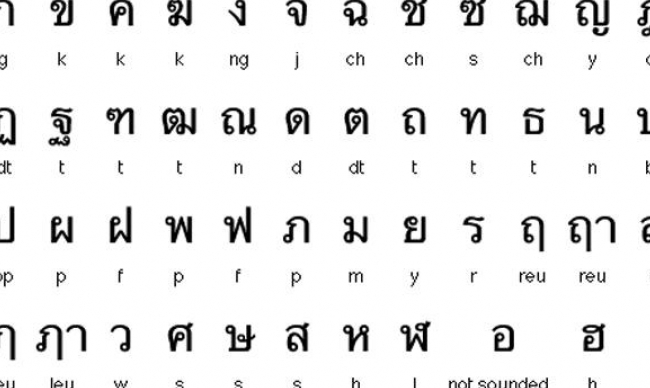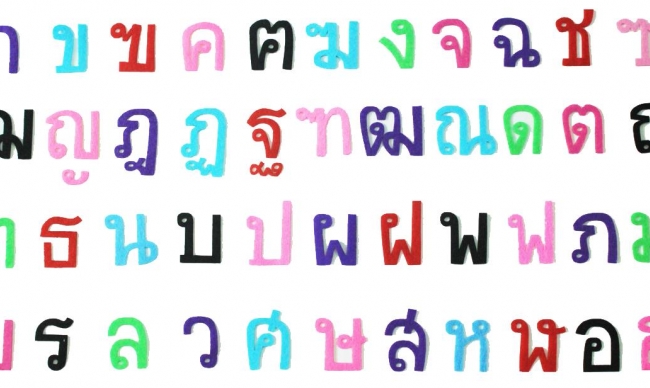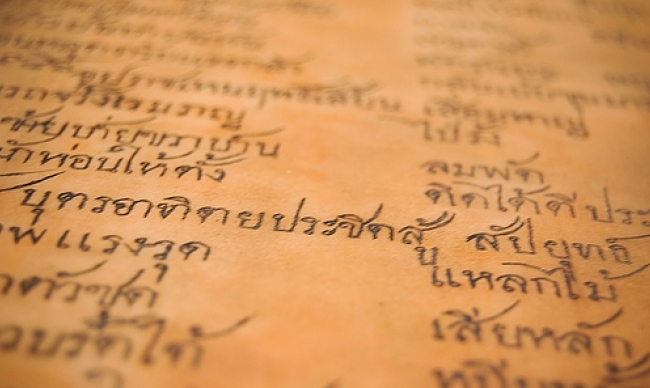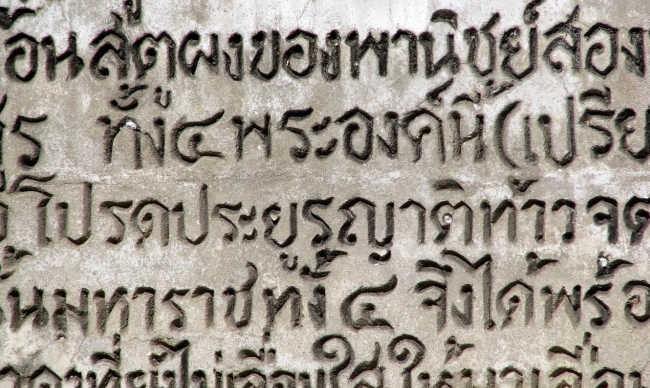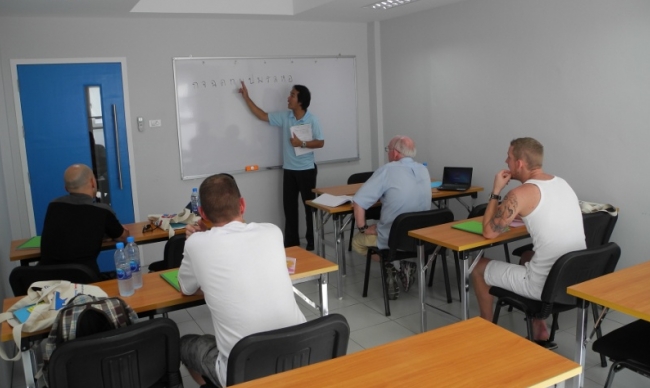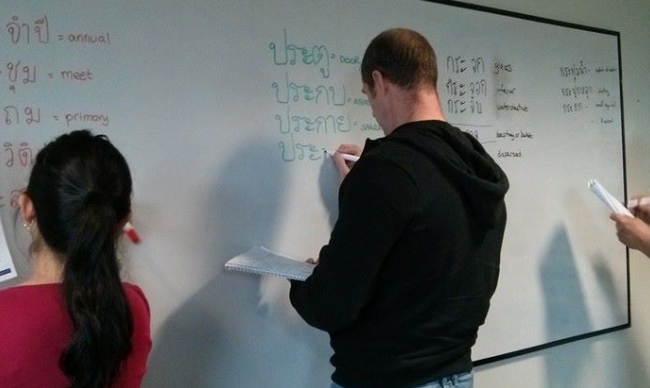Thai language
Considered as one of the oldest languages in East and South-East Asia, Thai, the official national language of Thailand, is spoken by the majority of the population. It is classified by linguists as a Chinese-Thai branch of the Sino-Tibetan family.
It is a tonal language, uninflected, and predominantly monosyllabic. 5 tones in Thai language consist of normal or middle tone, high, low, rising and falling. Foreigners who are unfamiliar with tonal language may find difficulty picking up Thai words as one word’s meaning is different when it is pronounced in 5 different ways. There are no plurals and tenses in Thai language. One or two additional words are used to determine the past, present or future. Thai pronominal system varies depending on the sex and relationship between speaker and audience.
There are 44 consonants, 18 vowels, and 4 diphthongs in Thai alphabet, which was derived from the Khmers script. It was allegedly systematized during the reign of King Ramkhamhaeng during the Sukhothai period.
While most Thais speak and understand the central Thai dialect, there are other dialects varying from region to region from Southern Thailand to Northeastern Thailand. Although the Thai language is the official language of Thailand, English can be considered unofficial second language. English level in some major cities is quite good but the number of fluent English speakers in some outlying areas remains very low.
You might also read...

Thai rich and long-lasting culture features distinctive traditional rituals. Thai conventional liturgies are shown clearly through wedding ceremony and some Buddhist rites.

The formal Thai national costume, known in Thai as "Thai phra ratcha niyom" (literally Thai dress of royal endorsement), includes several sets of clothing designed for use as national costume in...

Wai is the traditional greeting gesture in Thailand. The wai is a graceful, totally unique action practiced throughout the country. It is accompanied with slight bow, and palms pressed together in...










































